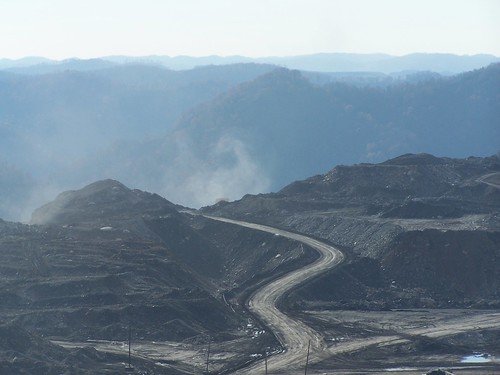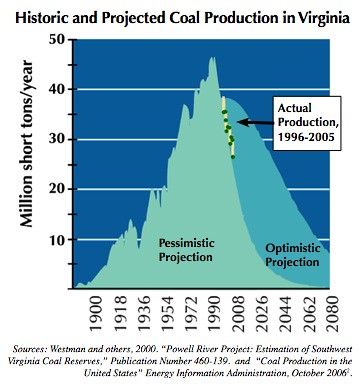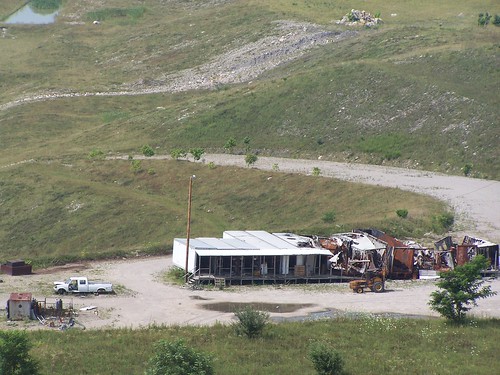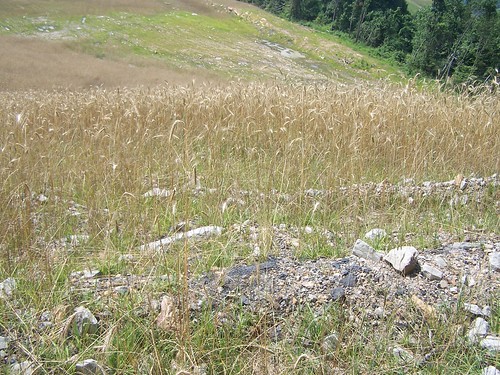Front Porch Blog
The issues with coal-fired power plant emissions are well chronicled – increased lung and cardiovascular disease, loss of visibility, and (somewhat importantly) the complete shattering of our global climactic patterns.
 Many are also seeing for the first time that extracting coal is as destructive (and socially expensive) as emitting coal. Mountaintop removal and strip mining are decimating the majestic Appalachian Mountains – the oldest mountains on this continent. More than 1 million acres have been blasted away, and shoved recklessly into creek-beds and hollows. 1200+ miles of headwater streams have been buried, poisoning the water for us and those who live down stream.
Many are also seeing for the first time that extracting coal is as destructive (and socially expensive) as emitting coal. Mountaintop removal and strip mining are decimating the majestic Appalachian Mountains – the oldest mountains on this continent. More than 1 million acres have been blasted away, and shoved recklessly into creek-beds and hollows. 1200+ miles of headwater streams have been buried, poisoning the water for us and those who live down stream.
The ancient hardwood forests of Appalachia (themselves an important carbon sink in our war on CO2) are often shoved aside with the mountain, left to rot and clog our streams without even being commercially harvested. The “rape” of Appalachia, as Senator Webb has called it.
How much coal would be “worth it?”
100 years?
250 years?
500 years?
Hows about a dozen?
…
Well, I know “science” isn’t the most popular thing in Washington these days, but according to “facts” we are sitting on AT MOST a mere 10-15 years of coal in the Appalachians.
Take a look at the region carrying the heaviest load for American coal production, and you’ll see that we are definitively beyond “peak coal” in Appalachia.
So says the USGS…
“Sufficient high-quality, thick, bituminous resources remain in [Appalachian Basin] coal beds and coal zones to last for the next one to two decades at current production.”
– United States Geological Survey (USGS), 2000 AD
So says the Department of Energy…
“[2002-2005] is the first time the Appalachian Region has experienced four consecutive years of coal production of less than 400 million short tons since the 1960s.”
– DOE/EIA-0584 (2005) Annual Coal Report 200516
So says Public Utilities Fortnightly:
Central Appalachia proved-in-place production capacity declined by 8 million tons per year in 2005, despite record level price signals since late 2003. ”
From: “A Wakeup Call for Coal” – Public Utilities Fortnightly, December, 2006
by Gary L. Hunt and Hans Daniels of Global Energy Advisors5
To get a better picture of what is happening, zoom in even closer on a state like Virginia:

Both projections see Appalachian coal production dropping at an alarming rate. But you will see that production, looking at actual outputs, actually follows the pessimistic projection in the regional picture.
This means that Appalachian coal is on its way to bust. Because of the expense of moving an entire mountain to get to the little coal we have left, the cost of Appalachian coal has DOUBLED in the last decade. And they tell us they are blowing up our mountains to give us cheap electricity!?

In fact, central Appalachian coal is now the most expensive on the domestic market (page 4 of .pdf)
The Appalachian Mountains have lost 6 kilometers in height over millions of year of natural weathering and erosion, churning ancient Carboniferous Era forest into that magical rock – coal. Now, mountaintop by mountaintop, the Appalachians are being removed from the earth once and for all. And at what gain?
1) To produce jobs?
No. Mountaintop removal is used specifically because it employs (significantly) fewer workers.
2) To produce energy?
No. Mountaintop removal supplies just 5% of our energy. You can only burn coal one time, and we can supply a far greater amount of energy through conservation, efficiency, and green power annually.
3) To bring the people of Appalachia the “flat land” we always “needed?”
No. Less than 1% of reclaimed sites are used commercially. One or two are remade into golf courses or prisons. But the ones that the politicians don’t see look like this…


(Pictures taken 10+ years into “reclamation process”)
BUT THERE IS A WAY YOU CAN HELP
The Clean Water Protection Act (HR 2169) is a simple bill that would slow and even stop most mountaintop removal coal-mining. This simple two sentence bill would reverse the Bush Administration’s 2002 decision that the toxic “waste” from mountaintop removal sites could be defined as “fill material” and dumped into our water ways.
Please take a few minutes and see if your Congressperson is a co-sponsor of the Clean Water Protection Act (HR 2169).
If they are a co-sponsor of HR 2169, thank them.
If they are not, contact them and ask them to “Co-sponsor the Clean Water Protection Act” (HR 2169).
If you have contacted them, and would like to do more, please help us work on the following targets. They are of national importance because of their seats on the “Water Resources Subcommittee,” where the “Clean Water Protection Act (HR 2169) will go first.
Eddie Bernice Johnson (TX-30) (Chairwoman)
202-225-8885
214-922-8885
Brian Baird (WA-03)
202-225-3536
360-695-6292
Russ Carnahan (MO-03)
202-225-2671
314-962-1523
John T. Salazar (CO-03)
202-225-4761
970-245-7107
Mazie K. Hirono (HI-02)
202-225-4906
808-541-1986
Grace F. Napolitano (CA-38)
202-225-5256
562-860-5050
Michael A. Arcuri (NY-24)
202-225-3665
315-793-8146
Another great way to be involved is to participate in DevilsTower’s “30 days for the mountains” series at DailyKos. Please leave comments and participate as you are able.
PREVIOUS
NEXT
Related News

Leave a comment
Your email address will not be published. Required fields are marked *
